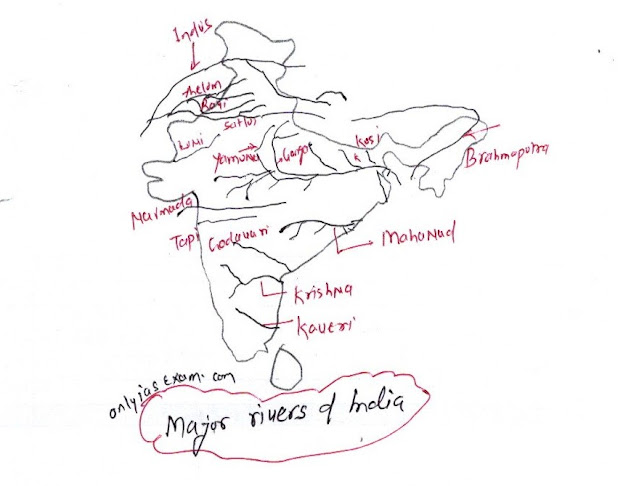Question.
What are the important characteristic features of north Indian rivers? How are these different from Peninsular rivers?
(Chapter-3 Drainage System, Class 11 NCERT geography "India Physical Environment")
Answer.
North Indian rivers are also called Himalayan rivers. Following are the important features of North Indian rivers;
Large river valleys;
Some of the North Indian rivers like the Indus, the Ganges, and the Brahmaputra rivers have very large river basins.
For example, the basin of the Ganges River is the largest in India. The catchment area of India is about 8,61,452 sq km out of 32, 12,289 sq km of the total area. The catchment area of the Ganges is about 26.30% of the total geographical area of the country.
Perennial in nature;
The origin of most of the northern rivers is glaciers, which is why water is available in the river due to the melting of glaciers even during the non-monsoon season. Water in North Indian rivers comes from both the melting of glaciers and rainfall.
Deep gorge, V-shaped valley, waterfall in the mountainous area;
Most of the northern river forms a deep gorge, V-shaped valley, and waterfall in the Himalayan region. It also indicates the youthful nature of the Himalayan river.
Oxbow Lake, Meandering course, flood plain, and braided channel;
Most of the northern river forms flood plains when it enters the plains from the mountainous regions.
Oxbow Lakes, the Winding (Vispar) River, and the Branded Channel are also important features of the North River.
Changing the course of the river;
The river changes its course frequently due to the great depression created in the upper reaches of the river. For example, the Kosi river is known to change its course frequently.
Great Sediments and Delta;
The northern rivers bring heavy sediments from the Himalayan region as the Himalayan river is made up of sedimentary rock. Part of the sediment gets deposited in the floodplains of the river and some of the sediment gets deposited in the mouth of the river to form a large delta. The Sundarbans Delta is the world's largest delta formed by the Ganges and Brahmaputra rivers.
Following are the differences between the North Indian River and the Peninsular River;
The North Indian and Peninsular rivers of India differ in aspects of location or origin, nature of the flow, nature of the river, catchment areas, and age of the river.
North Indian rivers are perennial in nature whereas peninsular rivers are non-perennial (seasonal) in nature.
North Indian rivers form large basins while peninsular rivers form small basins.
Most of the North Indian river originates in the glaciers of the Himalayas while most of the peninsular river originates in the Western Ghats.
North Indian rivers form deep gorges, V-shaped valleys, oxbow lakes, and meanders while peninsular rivers form wide and shallow valleys, and oxbow lakes and meanders are absent in the Peninsular River.
North Indian rivers are youthful in nature while peninsular rivers are older than the northern rivers.
North Indian rivers form large deltas at their mouths while peninsular rivers form either a small delta or estuaries at their mouths.
North Indian river like Kosi is known to change course while the peninsular river has a fixed flow.
Most of the northern rivers form dendritic drainage patterns while most of the peninsular rivers form trellis and radial drainage patterns.

ConversionConversion EmoticonEmoticon